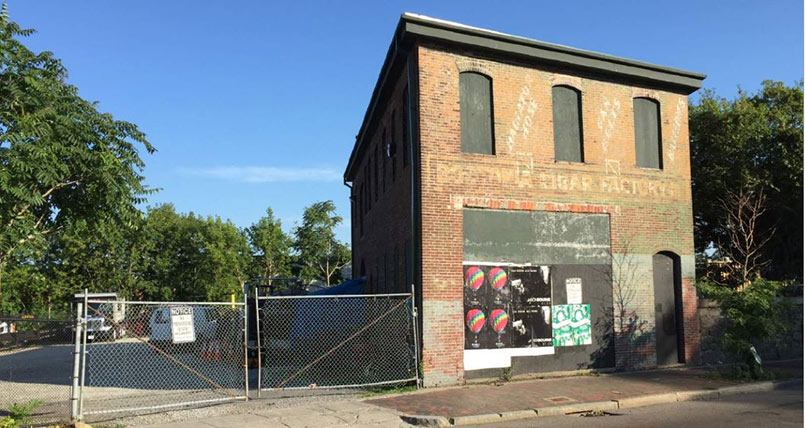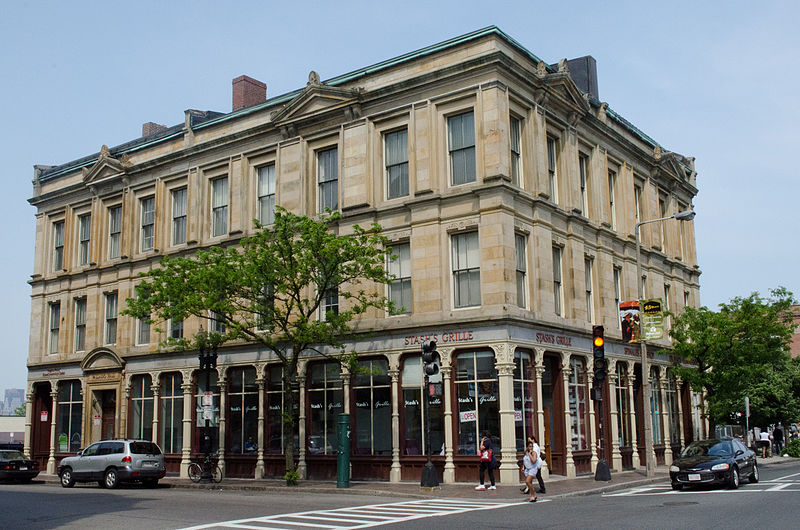
06 Dec 5 Historic Buildings You Must See in Nubian Square
In a city like Boston, you probably pass by hundreds of historic buildings on your commute to work or school, but you might not know their history… Check out some of our favorite historic buildings around the newly-minted Nubian Square!
Bruce C. Bolling Municipal Building (2300 Washington Street)
Originally built in 1901 for Ferdinand’s Furniture Store, a centerpiece of commerce in bustling Nubian Square, the building at 2300 Washington Street was rehabilitated and renamed for Boston’s first African American President of the Boston City Council, Bruce C. Bolling in 2015. The building is a collection of three connected buildings that take up almost an entire block. The towering corner facade is a an elegant wedding cake style building with a prominent curved corner, oversized round windows, and two stories of storefront glass.
During the early 20th century, Ferdinand’s location next to Dudley Square, one of the largest bus stations in Boston, lead to its great success, in part to its proximity to the train line, but by the 1970s the business had closed. In 1987, the elevated line was decommissioned and taken out of service. The building was vacant for decades until its rehabilitation in 2015. Today, the Bolling building is home to Boston Public School administrative departments, and includes a green roof, state-of-the-art office space, retail, civic spaces, and community meeting space.
Palladio Building (56-62 Warren Street)
Built between 1878-1880, Palladio Hall is a historic three-story retail and office building located at the corner of Warren and Dudley streets. In the late 19th century, Nathaniel J. Bradlee, a prominent Boston architect, designed and later owned the building after it was constructed by T.J. Whidden, a well-respected builder of the time. Unique for ornate architectural details, Palladio Hall is one of Boston’s few commercial buildings in the Italian Renaissance style and features a handsome Ohio sandstone facade and cast iron storefronts. Palladio Hall is now home to a variety of small businesses and is headquarters for Nuestra Commidad and the Nuestra NeighborWorks Homeownership Center.
Eustis Firehouse (20 Eustis Street)
Built in 1859, the Eustis Street Firehouse is the oldest remaining fire house structure in Boston. The building was designed by architect John Roulestone Hall. This building was used first for a hand-pulled fire apparatus. The fire squad and man-pulled engine were used during the Great Boston Fire of 1872and two of its members perished in the blaze. Later, after Roxbury merged with the City of Boston, a stable was added to the back of the building for horses that were used to pull hook and ladder equipment. It later served as a Spanish American War Veteran post.
The building sat empty and in a precarious state for more than 50 years before Historic Boston Inc. completed a $2.5 million rehabilitation of the structure for two office suites. The redevelopment included reconstructing the previous wood frame addition to the structure.
Former Hotel Dartmouth building (51-61 Warren Street)
Constructed in 1871, the former Dartmouth Hotel Building is a rare remaining example of a nineteenth-century apartment hotel in Roxbury. Designed by architect John Roulestone Hall for William M. Rumery, Co., the building is a Second French Empire style four-story building, replete with a mansard roof, seven Queen Anne Towers, bays and turrets.
The Dartmouth became a commercial building by the 1930s, and fell into disrepair for several decades. In 2003, Nuestra Comunidad Development Corporation purchased the Dartmouth and completed an extensive renovation, including restoring the original marble façade. The Dartmouth now stands as a architectural gem an a center of commercial activity in Dudley Square.
Nawn Factory (39 Zeigler Street)

Photo from Historic Boston Inc.
Built in 1880, the Owen Nawn Factory at 2080 Washington Street is a reminder of Roxbury’s industrial past. The two-story Italianate style brick manufacturing structure is named for its original owner, Owen Nawn, a Roxbury contractor who was also responsible for building some of the elevated Orange line along Washington Street in 1901. The simple cornice line, flat roof and simple segmentally arched window and door surrounds lend the building a utilitarian simplicity appropriate to its commercial function. The cobblestone court which links the factory and the Cunningham and Doggett Houses was once a well used and busy place. Tenements occupied the site near the rear portion of the factory building. Josiah Cunningham’s candle making shop and barn also fronted on the court. Maps indicate that the cobblestone passageway extended through to Harrison Avenue in the latter part of the nineteenth century and was known as Nawn Street due to the large number of buildings lining the street owned by Mr. Owen Nawn.
The factory building has been vacant for nearly 50 years and today represents only one-third of its original size after several fires and years of deferred maintenance forced demolition of the rear of the long building.






